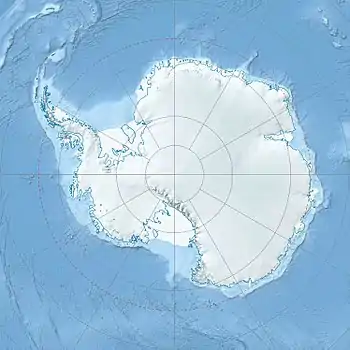Bowman Glacier
Bowman Glacier is a deeply entrenched glacier, 40 nautical miles (70 km) long, descending the polar plateau between the Quarles Range and the Rawson Plateau of the Queen Maud Mountains to enter the Ross Ice Shelf just west of the flow of Amundsen Glacier. It was discovered in December 1929 by the Byrd Antarctic Expedition geological party under Laurence Gould, and named by Richard E. Byrd for Isaiah Bowman, an eminent geographer who was president of Johns Hopkins University, 1935–49, and Director of the American Geographical Society, 1915–35.[1]
| Bowman Glacier | |
|---|---|
 Location of Bowman Glacier in Antarctica | |
| Location | Ross Dependency |
| Coordinates | 85°34′S 162°00′W |
| Length | 40 nmi (74 km; 46 mi) |
| Thickness | unknown |
| Terminus | Ross Ice Shelf |
| Status | unknown |
References
![]() This article incorporates public domain material from "Bowman Glacier". Geographic Names Information System. United States Geological Survey.
This article incorporates public domain material from "Bowman Glacier". Geographic Names Information System. United States Geological Survey.
| Types | |||||||
|---|---|---|---|---|---|---|---|
| Anatomy | |||||||
| Processes | |||||||
| Measurements | |||||||
| Volcanic relations | |||||||
| Landforms |
| ||||||
| |||||||
This article is issued from Wikipedia. The text is licensed under Creative Commons - Attribution - Sharealike. Additional terms may apply for the media files.